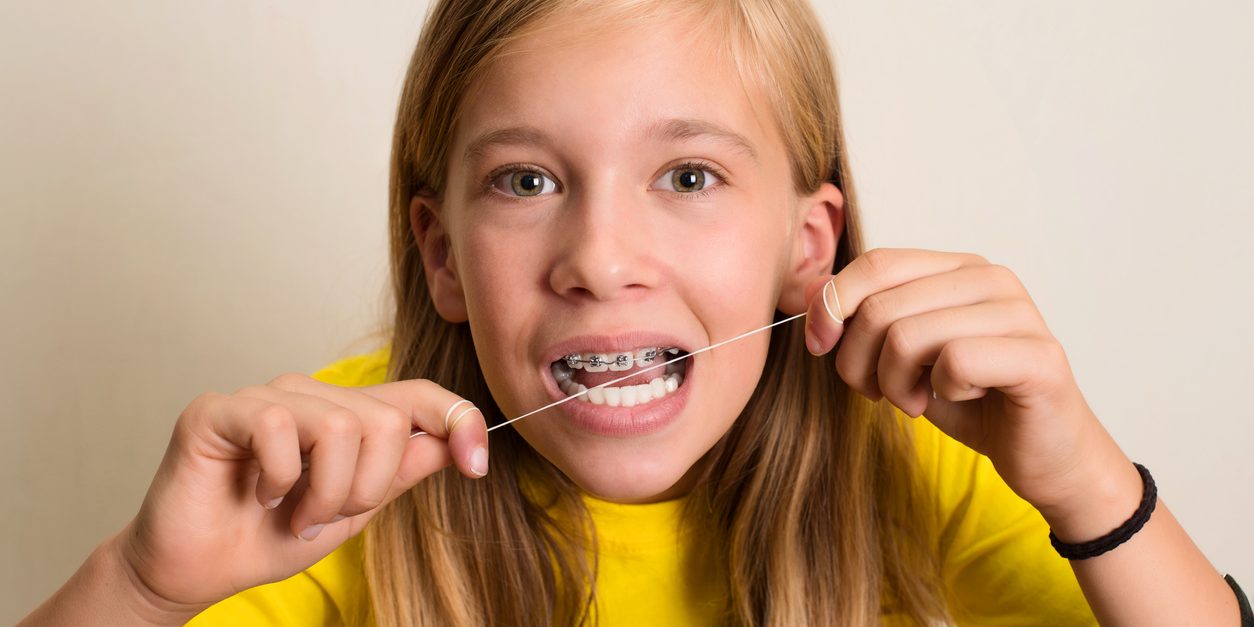Many of us associate those awkward teenage years with braces. However, the advantages of braces can be had at any time of your life, and even adults are frequently getting braces to improve their smile. There’s no right or wrong answer when it comes to improving your teeth, so whether you get braces as a kid or adult, they are effective. Shodhan Dentistry of Yucaipa wants to make sure that you have the smile of your dreams, and braces can be a huge help to achieve that. But braces come with some logistical differences that you should be aware of. One such factors is knowing how to floss with braces.
Why Should You Get Braces?
The most compelling reason for braces is to make your smile more symmetrical and attractive. A recent study found that smiling could make you look healthier and more attractive than wearing makeup or being a “good” weight. We may not realize it, but the smile does hold a lot of power over our self-confidence.
First and foremost, the majority of users are doing it for an aesthetic boost. But there are many other practical reasons that braces can help as well. Braces align your teeth, which makes chewing food easier and safer. Without gaps, there’s less opportunity for food to get stuck between your teeth, which mitigates the risk of cavities and infection. Having proper alignment also makes it much easier to maintain proper oral hygiene. Brushing and flossing become more effective after having braces. Also, your cheeks and lips are better protected after getting braces because you are less likely to bite them or have trouble from an overbite.
Oral Hygiene With Braces (and How to Floss!)
Those who have had braces know that your daily oral hygiene routine does change a bit to accommodate for the metal in your mouth. Brushing becomes a tad more important to ensure that you are cleaning around the brackets. It’s easy to get complacent and not brush properly, but what gets ignored quite frequently is flossing. Braces can make your mouth feel crowded, and flossing is now a huge chore.
You must continue to do it to save your gums, so plan to spend a little more time flossing. You won’t be able to use the flossing sticks anymore, but some tools can help make it a bit easier. Essentially, you need to thread a piece of floss through the wire that connects the brackets to be able to floss between your teeth. This needs to be done to each pair of teeth on both the top and bottom.
There are disposable threaders you can purchase to make getting the floss under the wire easier. They function similarly to the way you would use a pin and thread for sewing. This still requires you to rethread for each pair of teeth. The most convenient tool for flossing with braces is the water flosser. This device uses a stream of water to clean out the areas between teeth and the gum line. Although these devices can cut down your flossing time significantly, they can be expensive.
Which Flossing Technique Is Right For You?
The answer to this question depends on a few different factors. It mostly comes down to your patience and your bank account. The three flossing techniques described above will work for anyone with braces, so it’s not a question about efficiency. Although the water flosser may seem like the obvious choice, not everyone values money and time the same way. If you prefer to be a bit more frugal, then spending a few extra minutes flossing each night may make more sense than purchasing a costly tool. But for those who value time more than money, the water flosser is the hands-down winner. Whatever you do, remember to floss with braces.

